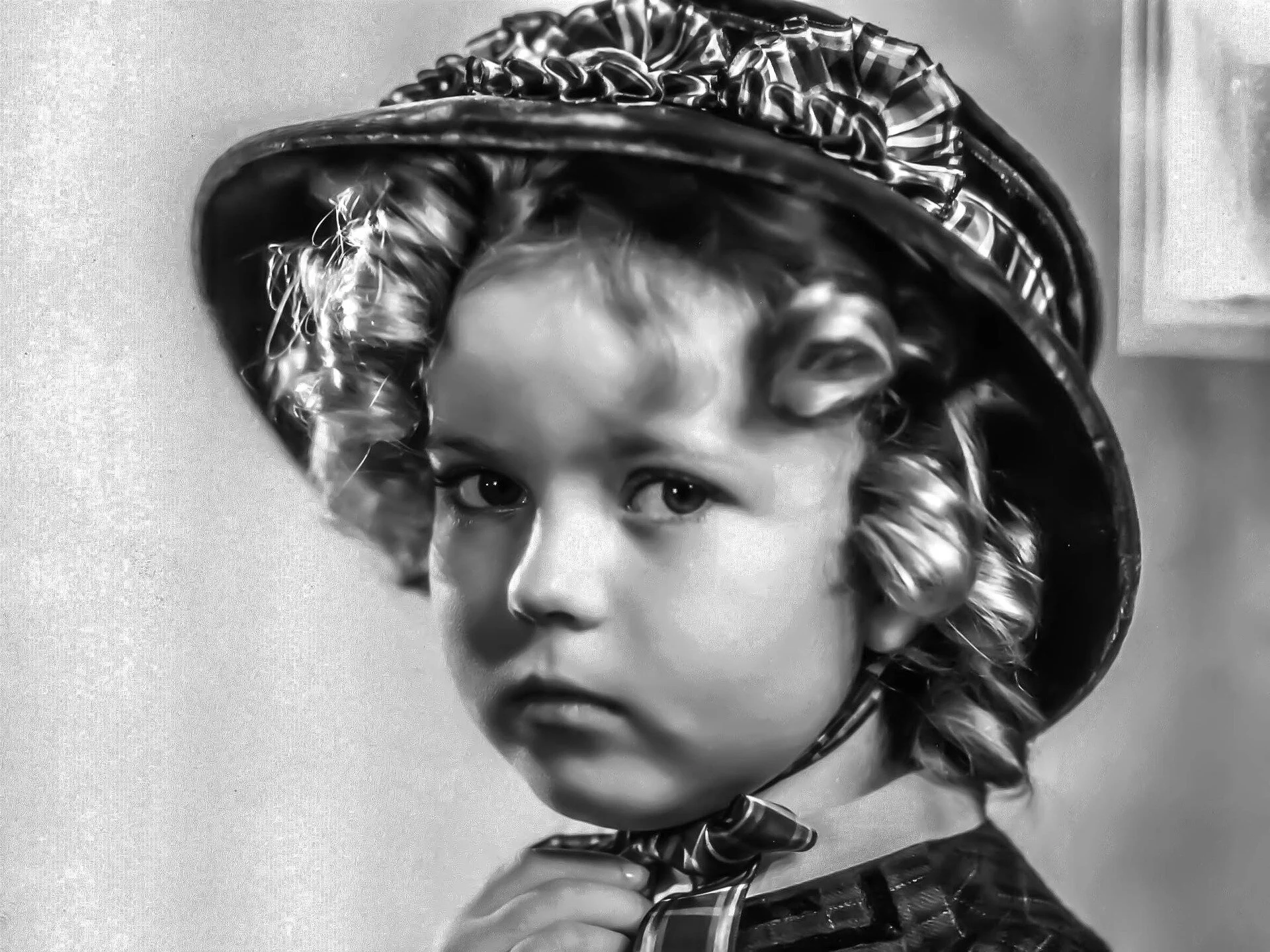Shirley Temple’s Controversial Roles (Part 2)
Victimizing the Roles of Children in Film
In Part 1 of Shirley Temple’s film role discussion, I concluded by bringing to light the heightened vulnerability of a child after having lost his or her parents. Miss Temple’s roles often portrayed her as an orphan. Due to a child’s delicate emotional state and lack of parental guidance once orphaned, they are more likely to fall into the traps of abusers, who are also well aware of a child’s heightened susceptibility. Additionally, children placed in residential or foster care are at a higher risk of exploitation and abuse.
Below, I will discuss a number of Miss Temple’s roles portraying this specific issue. The key question here we should be asking ourselves, is why? Why have children been, and continue to be, portrayed this way? And why are we, as the viewers, being shown such images of children being prayed upon by adults who outwardly, exploit their innocence and use their challenging circumstances in order to lure them in.
The unfortunate commonality of this theme spans across decades and because of this, it can certainly lead one to wonder, for what purpose? Has it been to desensitize viewers to this immorality? Has it been to perhaps, to socially normalize these actions so that their criminality is not as strictly observed? But in the end, who benefits?
When thinking about these questions, it is easy to become consumed by them, but what they do allow for us is to take a look at the entertainment industry with a more critical lense. Especially, surrounding the messaging and overall safety of our children and youth.
Allow me to first wrap up by describing a few more of Shirley’s roles depicting these types of concerning themes. In the coming posts on this topic, I will provide more examples of how child roles have continuously been sexualized and perverted throughout the decades in film, while also tackling some of the above questions in more depth.
After Baby Burlesks
In 1934, Shirley signed on with 20th Century Fox. But the often strange scenes containing sexual innuendos did not disappear. Many of her movies evolved around child institutions where Temple was often portrayed as an orphan. The guardians in these films were met with untimely deaths.
In Bright Eyes (1934), Shirley’s mother is run over by a car. Also, her governess, in Poor Little Rich Kid (1936) is also run over. This car accident theme was ridiculed in Lolita (1962) when Charlotte Heyes is run over on her way to posting a letter meant to expose Humbert’s perverse intent of her daughter.
Split criticism evolved over Lolita, due to its controversial depictions of child sexual abuse. The director, Stanley Kubrick was met with severe censorship limitations. Once again, In Bright Eyes (1934), Shirley is seemingly mauled by a group of older men as she coquettishly parades between two aisles of them. They pick her up, shove a package of Cracker Jacks under her arm and press her face into a cake that leaves traces of white icing around her mouth.
The stifling question here, is how was this ever permitted for audiences and family viewing?
Morgan also buys Shirley’s character a Hula skirt and a ukulele. She is seen twirling around topless wearing only the Hula skirt. A then voyeuristic scene follows as the camera zooms in on Shirley’s buttocks, hardly covered by a swimsuit which is conveniently too small for her.
If we also look at the many 20th Century Fox studio portraits of Temple, many of them depict her in inappropriate poses. For example, some photos display Temple facing her body away from the camera, turning only her pouty face to look behind her, with much emphasis on her buttocks area.
Temple Had Her Share of Critics
Temple was a popular film child star in the 1930s, but she did however, have her critics. Gilbert Seldes, who served as the editor and drama critic of the seminal modernist magazine The Dial, compared her to Mae West, the reigning sex symbol, and actually recommended her directors face a firing squad.
Graham Greene, an English writer and journalist regarded by many as one of the leading English novelists of the 20th century stated, that Temple attracted audiences for all the wrong reasons. Opening up the dialogue surrounding the exploitation of Temple in his well-known review of Willy Winky (1937), published in the then British magazine, Night and Day (1937), Greene stated the following:
“The owners of a child star are like leaseholders—their property diminishes in value every year. … Miss Shirley Temple’s case, though, has peculiar interest: Infancy is her disguise, her appeal is more secret and more adult. Already two years ago she was a fancy little piece (real childhood, I think, went out after The Littlest Rebel).”
Greene then goes on to insist that Temple’s appeal was much too adult than innocent. He also praised the novel Lolita as one of the best books published in 1955 as it critiqued Hollywood’s Shirley Temple industry.
Additionally, Greene wrote of Captain January (1936), that the camera was being manipulated in a salacious manner to provoke an enjoyment on the part of Buddy Ebsen as Temple danced repeatedly towards his genital area.
“In Captain January she wore trousers with the mature suggestiveness of a Dietrich: her neat and well-developed rump twisted in the tap-dance: her eyes had a sidelong searching coquetry. Now in Wee Willie Winkie, wearing short kilts, she is completely totsy. Watch her swaggering stride across the Indian barrack-square: hear the gasp of excited expectation from her antique audience when the sergeant’s palm is raised: watch the way she measures a man with agile studio eyes, with dimpled depravity. Adult emotions of love and grief glissade across the mask of childhood, a childhood skin-deep.”
By opening up the dialogue surrounding the exploitation of Temple by Hollywood, Greene would pay a price, when 20th Century Fox and even Temple herself sued on behalf of his reviews.
Exit Shirley
The Shirley Temple legacy continues to live on, but questions regarding her directors’ motives were hardly raised. Author of Lolita, Vladimir Nabokov summarized these concerns quite accurately.
Perhaps, you have never watched a Shirley Temple film and if you have, maybe you’ve not caught on to the pedophilic agenda of their plots and the sexual victimization of children.
These sexualizing and objectifying themes not only exploited many child actors in the early cinema days, but have also continued to weave and sew themselves in today’s multibillion-dollar film industry. What the crude messaging surrounding these films has done and continues to do, is normalize and desensitize viewers to this sexual behaviour in children including, our young viewers. This in turn, can be significantly damaging to their perspective and overall innocence.
The most unfortunate part, is that these themes are becoming more and more normalized and have been pushing boundaries of morality for decades, creating unhealthy perspectives, relationships and behaviour.
However, with this said, the first step to it’s resolve, is awareness.
If you are or believe you have identified someone in a trafficking situation, you can take action. Call 911 immediately to notify local law enforcement. You may also call the human trafficking hotlines in Canada and the United States by dialling the numbers below. Both hotlines are open 24/7/365 days of the year and provide services in over 200 languages.
Canadian Human Trafficking Hotline
1-833-900-1010
United States Trafficking Hotline
1-888-373-7888



